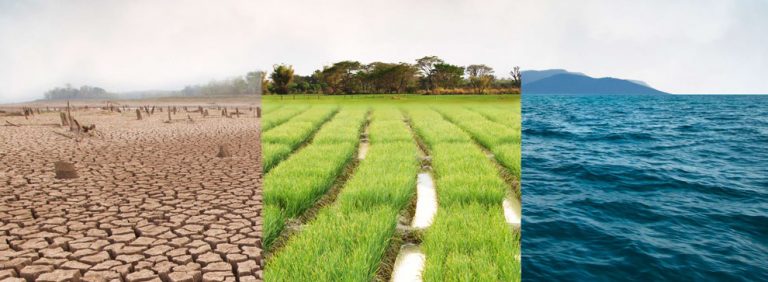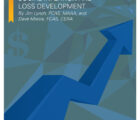
When I first considered joining the actuarial profession after finishing university in 1979, I expected to be working on ratemaking and reserving, hopefully moving on to a senior position after spending my actuarial student years as a human spreadsheet. For those of you too young to remember, there was a time before Lotus (later Excel) spreadsheets, smartphones and the internet, when actuarial students spent most of their time multiplying and dividing numbers using a Hewlett-Packard calculator and recording the results with a pencil on a green sheet of accounting paper. I dreaded my boss having me change a number late in the day, necessitating a lot of erasing and recalculating.
When spreadsheets came on the scene, I feared for my job as they could do in milliseconds what took me hours to do. This fear turned out to be unfounded, for the profession vastly increased its scope through many waves of automation and the development of exciting new techniques. Actuaries expanded roles in capital management, enterprise risk management, extreme events (through catastrophe modeling), big data and much more. We are fortunate to belong to a dynamic profession that has been reinventing itself to tackle new challenges throughout my entire career.
Today the world is embarking on a journey to decarbonize its energy systems and use more sustainable practices. Actuaries have the potential to play an important role in this process. Opportunities will arise for three primary reasons: Almost every aspect of economic activity will be impacted, many of our insurance specific work products will be affected, and we have relevant skills. As a bonus, working in this space will offer rewards for those who want to make a positive social impact by helping tackle myriad problems — and opportunities — represented by climate risk.
Change is inevitable; resistance is futile
The scientific community has achieved an increasing degree of consensus on the challenges facing Earth’s climate. The recently released International Panel on Climate Change (IPCC) 6th Assessment report, compiled by 234 authors from 65 countries, laid out several clear conclusions. At the CAS Annual Meeting, Dr. Linda Mearns of the National Center for Atmospheric Research, who was one of its lead authors, outlined these points:
- Recent changes in the climate are widespread, rapid and intensifying. They are at levels not seen in thousands of years.
- It is indisputable that human activities are causing climate change. Human influence is making extreme climate events, including heat waves, heavy rainfall and droughts, more frequent and more severe.
- Climate change is already affecting every region on Earth in multiple ways.
- Unless there are immediate, rapid and large-scale reductions in greenhouse gas emissions, limiting warming to 1.5°C will be beyond reach.
- To limit global warming, strong, rapid and sustained reductions in carbon dioxide, methane and other greenhouse gases are necessary.
At the recent COP 26 meeting in Glasgow, nations pledged to act to reduce emissions. Regardless of whether governments act, however, other forces are driving the world to decarbonize. The cost of renewable power has been dropping rapidly, and many countries are using renewables to generate substantial proportions of electricity. For example, in November 2021 solar power met more than half of Australia’s electricity demand for several hours. In 2020 renewables represented 38% of the European Union’s electricity, exceeding the 37% generated by fossil fuels. Technological advances in a wide range of products, including batteries and hydrogen, promise to further drive affordable alternatives to fossil fuels in years to come.
Investors are increasingly demanding that companies disclose their carbon footprints and act to become more sustainable. In his 2022 CEO letter, BlackRock’s Larry Fink wrote:
“It’s been two years since I wrote that climate risk is investment risk. And in that short period, we have seen a tectonic shift of capital. Sustainable investments have now reached $4 trillion. Actions and ambitions towards decarbonization have also increased. This is just the beginning — the tectonic shift towards sustainable investing is still accelerating … Every company and every industry will be transformed by the transition to a net-zero world. The question is, will you lead, or will you be led?”
These are but a few quick examples among many that change is coming and nothing, including the huge resources of the fossil fuel lobby, is going to lead us back to the old ways of powering our economy.
Financial services will be a key part of that, and actuaries’ work will be affected.
In the financial services industry, regulators around the world are increasing requirements for disclosure of climate-related risks and its inclusion in enterprise risk management frameworks. The Financial Services Board Report on Promoting Climate Related Disclosures says:
“… there is a strong focus across the majority of jurisdictions on implementing climate-related disclosures . . . with a large majority of jurisdictions setting or planning to set requirements, guidance or expectations for both financial institutions and non-financial corporates.”
Actuaries can play an important role in helping firms with reporting under frameworks like the Task Force on Climate-Related Financial Disclosures (TCFD), such as in risk assessment and measurement, as well as internal metrics settings to monitor and formulate strategies for managing risk and pursuing opportunities.
We have useful skills, but need more.
Climate risk and moves towards sustainability will also affect actuarial work in many ways, including:
- Assessing how changes in the frequency and severity of extreme events will affect pricing, capital requirements and reinsurance needs, among others.
- Understanding how new products, such as electric vehicles or rooftop solar panels, will change loss patterns and repair costs.
- Identifying how prices may change as the economy transforms, affecting most components of insurance coverage, including replacement costs for buildings.
- Evaluating the firm’s risk from climate change for financial condition reports or risk management.
- Managing significant changes in insurer investment practices.
- Targeting new products and services at changing demographics as customers and their needs change.
In November 2020, the Actuaries Institute of Australia published “Climate Change — Information Note for Appointed Actuaries,” which provides a useful summary of the ways actuarial work may be affected by climate risk, including sections specifically targeted at general insurance (property-casualty), life and health.
Actuaries are well-suited to play an important role in climate risk and sustainability. Firms’ responses to shareholder expectations and regulatory requirements will be based on risk and risk assessment, our core strengths. Our models, such as economic capital and catastrophe models, can be repurposed to address climate challenges. Our skills in big data can help firms navigate the complex analysis of things like demographic changes or carbon footprints in supply chains. Our numeric skills can help with the development of new metrics to measure decarbonization.
Some specific things firms need include the following:
- Education and guidance, with an emphasis on understanding how climate risk may affect their organizations.
- Assistance with synthesizing the vast amount of information on climate risk into actionable intelligence.
- Physical risk assessment for relevant perils, such as how hurricane patterns will change.
- Transition risk assessment for their markets, investment portfolios and operations.
- Processes to embed climate risk into the overall risk management framework.
- Reporting to various stakeholders.
- Measurement of emissions for their business.
- Strategies for product design, pricing, underwriting, reinsurance, technologies, etc.
To provide these services, actuaries will need to augment the skills traditionally acquired in our training with disciplines, such as natural perils, climate modeling, macroeconomics and social science. We will also need to work in multidisciplinary teams, where we will not be the only subject matter experts in the room. Data will come from external sources instead of the insurance-specific information (such as premium and losses) we are accustomed to dealing with. And since the future may not resemble the past, we will need to place greater reliance on scenario building.
Actuarial organizations around the world are gearing up to help their members upskill in this area. The CAS has launched a Climate Change Resource Library, which includes recordings of climate risk sessions at recent meetings. The CAS is hosting the 2022 Climate Risk Seminar virtually. The Institute and Faculty of Actuaries in the U.K. and the Actuaries Institute in Australia are beginning to discuss adding climate topics to examinations. The International Actuarial Association has been producing a series of papers on climate risk and is working with the IPCC to produce a “Summary for Actuaries” of the 6th Assessment Report. Many resources are available to actuaries to learn more about climate and sustainability (see “Up Your Climate and Sustainability Game”).
Another phase in our evolution
Climate and sustainability represent another great opportunity for our profession to evolve and grow. The demand for services in this area is increasing exponentially and many other professions are clamoring to provide service. We have unique skills, a strong reputation for providing unbiased advice, recognized standards and great professional organizations like the CAS backing us. I feel fortunate to have chosen a profession which has been able to evolve alongside us, and am glad I persevered through the human spreadsheet phase to have participated in many of its changes.
Rade Musulin, ACAS, MAAA, CCRMP, is a principal at Finity Consulting in Sydney, Australia, specializing in natural perils and climate risk. He serves as convenor of the Actuaries Institute Climate Risk Working Group and chair of the International Actuarial Association’s Resource and Environment Virtual Forum. He was vice president-casualty for the American Academy of Actuaries from 2016-2018.
Case study: Compound effects
In December 2021, a tornado outbreak in Kentucky killed 74 people and caused massive property losses. It was one of the most severe December events in history, reflecting abnormally high temperatures and unusual jet stream patterns. It was one of several extreme events affecting the U.S. in 2021, such as the Texas cold spell (Winter Storm Uri) in February and unprecedented heat in the Northwest in June.
At the same time, lumber, a key component of home construction and rebuilding, hit $1,700/thousand board feet, far above its historical range of $300-$400. A recent article in The Atlantic magazine points to climate-related drivers for this increase, including beetle infestations and extreme fires as well as floods in timber-producing regions in Canada.
While it is not certain these incidents are directly related to climate change, they are examples of compound events that can affect insurers and the uncertainty that climate risk can pose. An actuary working for an insurer underwriting homes in Kentucky could consider the following:
- Is the likelihood of extreme tornados changing from historical norms?
- Is the cost of rebuilding being affected by high lumber prices?
- Are these random unusual events or part of a long-term trend?
- Are catastrophe models used to manage extreme event risk still accurate?
- Is my reinsurance program sufficient?
- Do I need to adjust rates to reflect these trends?
Up Your Climate and Sustainability Game
Please see these resources to learn more about climate change and sustainability:













